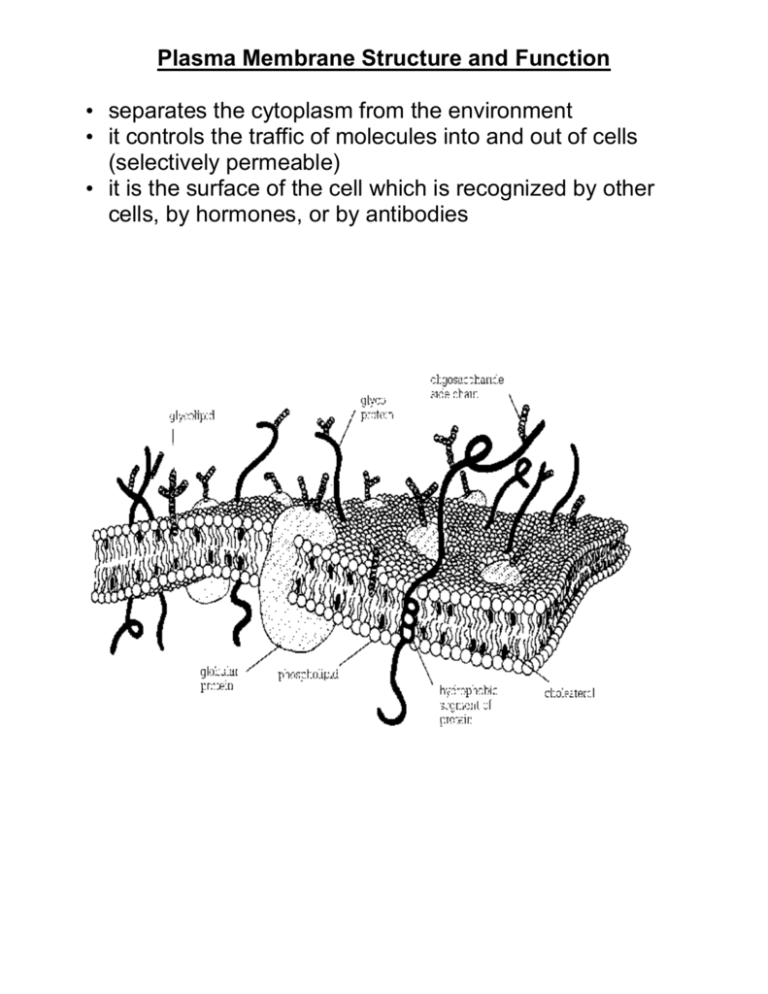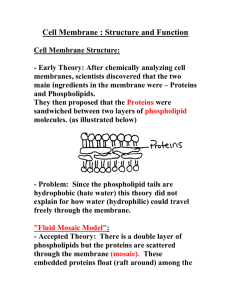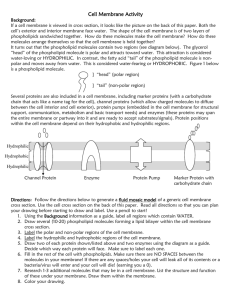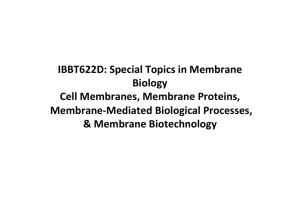Plasma Membrane Structure and Function
advertisement

Plasma Membrane Structure and Function • separates the cytoplasm from the environment • it controls the traffic of molecules into and out of cells (selectively permeable) • it is the surface of the cell which is recognized by other cells, by hormones, or by antibodies Membrane Lipids 1. Phospholipids - most abundant lipids in the membrane. They: i) ii) iii) iv) spontaneously form layers on the surface of water are amphipathic molecules (hydrophobic/hydrophilic) move around in the membrane have varying degrees of unsaturation in their tails (determines fluidity at lower temperatures) 2. Glycolipids - glycolipids are like a phospholipid, but with sugars attached at the head region. They are found only on the outside layer of the plasma membrane. Their function is to: i) protect the cell surface ii) act as recognition sites iii) help cells stick to surfaces 3. Cholesterol - small, flat ringed structure (steroid) that occurs between phospholipid molecules in the membrane. Their function is to: i) make membranes less fluid ii) make membranes less permeable iii) make membranes tougher Membrane Proteins Membrane proteins have a variety of functions: ENZYMES TRANSPORT RECEPTORS FORMATION OF JUNCTIONS CELL-CELL RECOGNITION ATTACHMENT TO EXTRACELLULAR MATRIX Membrane proteins have the following properties: hydrophobic and hydrophilic regions proteins moved around in the membrane some proteins actually protruded on both sides of the membrane!!











